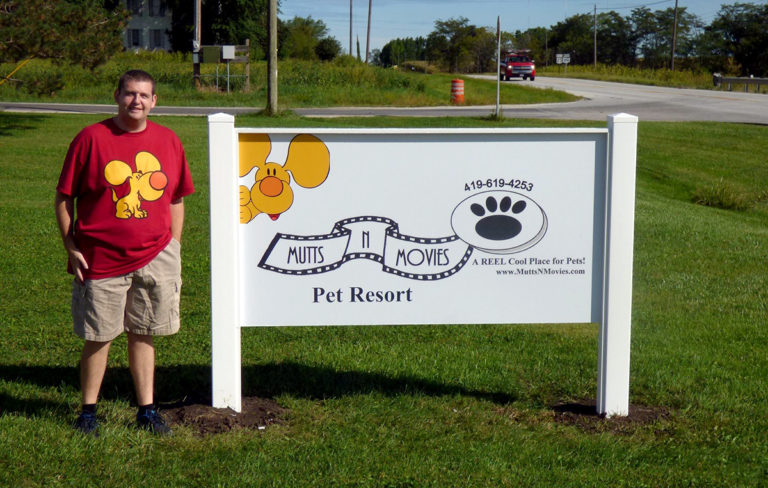The Network
by Robert J. Doman, Jr.
Where does a child’s future lie? How can we determine the potential of a given child? These questions cannot be answered. As difficult as it will seem to a parent, particularly the parent of a child with a problem, the questions shouldn’t even be asked. If someone volunteers an answer, they should not be heard.
Every parent does ask the question, but with our healthy children we usually answer it ourselves. A lot will depend upon his or her experience in school with his or her friends, and whether or not he or she gets good teachers. There are so many variables involved in the development of a child that it is impossible to determine what the child will ultimately be able to do, except if we control the variables.
Part of the professional’s job in the health care field is to make a diagnosis and a prognosis. The diagnosis names the problem, or as in many cases with children, names the child. The prognosis is a professional opinion as to the potential of the child. How can anyone, considering all of the variables, make a prognosis? What often is even more amazing is when they say they don’t know what is wrong and still make a prognosis.
As impossible as it seems, the prognoses made for many “labeled” children are incredibly accurate. The severely brain-injured child who is supposed to die, dies. The cerebral palsied child who is not supposed to walk, doesn’t walk, and the child with Down Syndrome who is not supposed to read and learn to function independently doesn’t. How do they do it? Simply by controlling the variables.
The severely brain-injured child is placed in an institution, receives minimal medical intervention and dies. The child with cerebral palsy spends almost all of every day in a wheelchair and is given the opportunity to walk for only an hour twice a week. He does not learn to walk. The child with Down Syndrome is placed almost from birth in a school for “retarded” children, an environment with very limited expectations and very limited opportunities. The seven-, eight-, or nine-year-old-child with Down Syndrome, if given any opportunity to learn to read, is probably limited to a few minutes at best and has probably been shown the same meaningless alphabet since he was four years old. His five-year-old little brother or sister in the Montessori kindergarten has reading instruction incorporated into almost their whole school day. Guess who does not learn to read.
Historically, one of the easiest children for whom to establish a prognosis was the child with Down Syndrome. Generally being easily recognized, they as a group were given the “opportunity” for special education, and received the “benefits” of post-graduate programs such as sheltered workshops. The existence of such programs significantly reduces the variables, increasing the odds of these children becoming just what everyone thought they would become.
If we were to take a hypothetical child with Down Syndrome, just as we have taken hundreds of Down children, and rather than limit the variables, increase the real opportunities by giving them more, not less, exposure to academics and learning and by providing them with nutritional and medical aids, the chances of the child functioning somewhere above their prognosis is excellent. We cannot project where the child will function, only that they will function better. INCREASING THE STIMULATION AND OPPORTUNITIES FOR ANY CHILD INCREASES THEIR CHANCES OF FUNCTIONING AT A HIGHER LEVEL.
Throughout my seminars and tapes I have tried to communicate the significance and importance of being positive. In my communication with health care professionals and educators, I have encouraged the open mind, the individual willing to try new or different techniques when the old have failed. The underlying question which everyone involved with health and education needs to ask themselves is whether it is their job, their responsibility to apply a limited methodology with hopes of limited success, or to apply a broad-based methodology and increase the odds of success. Should they do their best for their regime or for their client. Many would argue that they are doing both, that their approach is the only valid approach, that other methods are unproven. When I hear of the “safe, proven treatment” it upsets me.
Last week a young couple came to me to ask about their two-year-old son. They had taken the child to a psychiatrist and a neurologist because of his behavior. Neither had given any recommendations for the child’s management or recommended any changes in the child’s sugar-laden diet. The only recommendation was that the child take Ritalin, an amphetamine “to calm him down.” When the family asked if there was anything else to try the physician mentioned another drug to try.
When the professional tells the family that there is “nothing else to do,” what they are really saying is that within their limited field that this is all there is to do. There is a dramatic difference, a difference between a chance and no chance, and hope and no hope.
The need exists to gather information relative to all methods, techniques, and approaches in health and education, information that transcends the boundaries of the health and education fields.
Over a year ago I had the opportunity to read John Naisbitt’s Megatrends, a book that helped me to see what it was that we had created at NACD and which helped me to see its direction. What I realized is that we had created, without actually naming it, was a network, an eclectic network. Naisbitt describes a network in Megatrends as people talking to each other, sharing ideas, information, and resources. He goes on to say that networks exist to foster self-help, to exchange information, and to change society. He further stated that they are structured to transmit information in a way that is quicker, more high-tech, and more energy-efficient than any other process known.
Add to the definition of “network” the definition of “eclectic,” which means to choose from what appears to be best from diverse sources, systems, or styles. NACD is an eclectic network comprised or parents and professionals concerned with health, development, and education.
Our present goal is to bring our information to more people. One of the means with which we are going to achieve this goal is through a computerized, national information service, through which any parent or professional can inquire as to what is available that might help their child. Through this service they can receive a summary of every method, technique, or approach that any member of our network is aware of, along with the names and telephone numbers of our members who have tried it. Our network presently has approximately ten thousand individual members. We are working to make that multiples of ten thousand. For the more of us there are, the more we will all know. The more we all know, the more we can all do to help our children and future generations.




